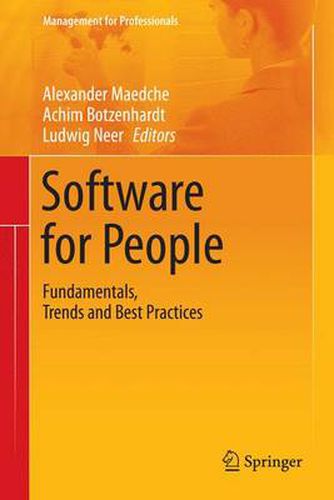Readings Newsletter
Become a Readings Member to make your shopping experience even easier.
Sign in or sign up for free!
You’re not far away from qualifying for FREE standard shipping within Australia
You’ve qualified for FREE standard shipping within Australia
The cart is loading…






This title is printed to order. This book may have been self-published. If so, we cannot guarantee the quality of the content. In the main most books will have gone through the editing process however some may not. We therefore suggest that you be aware of this before ordering this book. If in doubt check either the author or publisher’s details as we are unable to accept any returns unless they are faulty. Please contact us if you have any questions.
The highly competitive and globalized software market is creating pressure on software companies. Given the current boundary conditions, it is critical to continuously increase time-to-market and reduce development costs. In parallel, driven by private life experiences with mobile computing devices, the World Wide Web and software-based services, peoples’ general expectations with regards to software are growing. They expect software that is simple and joyful to use. In the light of the changes that have taken place in recent years, software companies need to fundamentally reconsider the way they develop and deliver software to their customers.
This book introduces fundamentals, trends and best practices in the software industry from a threefold perspective which equally takes into account design, management, and development of software. It demonstrates how cross-functional integration can be leveraged by software companies to successfully build software for people. Professionals from business and academia give an overview on state-of-the-art knowledge and report on key insights from their real-life experience. They provide guidance and hands-on recommendation on how to create winning products. This combined perspective fosters the transfer of knowledge between research and practice and offers a high practical value for both sides.
The book targets both, practitioners and academics looking for successfully building software in the future. It is directed at Managing Directors of software companies, Software Project Managers, Product Managers and Designers, Software Developers as well as academics and students in the area of Software and Information Systems Engineering, Human Computer Interaction (HCI), and Innovation Management.
$9.00 standard shipping within Australia
FREE standard shipping within Australia for orders over $100.00
Express & International shipping calculated at checkout
This title is printed to order. This book may have been self-published. If so, we cannot guarantee the quality of the content. In the main most books will have gone through the editing process however some may not. We therefore suggest that you be aware of this before ordering this book. If in doubt check either the author or publisher’s details as we are unable to accept any returns unless they are faulty. Please contact us if you have any questions.
The highly competitive and globalized software market is creating pressure on software companies. Given the current boundary conditions, it is critical to continuously increase time-to-market and reduce development costs. In parallel, driven by private life experiences with mobile computing devices, the World Wide Web and software-based services, peoples’ general expectations with regards to software are growing. They expect software that is simple and joyful to use. In the light of the changes that have taken place in recent years, software companies need to fundamentally reconsider the way they develop and deliver software to their customers.
This book introduces fundamentals, trends and best practices in the software industry from a threefold perspective which equally takes into account design, management, and development of software. It demonstrates how cross-functional integration can be leveraged by software companies to successfully build software for people. Professionals from business and academia give an overview on state-of-the-art knowledge and report on key insights from their real-life experience. They provide guidance and hands-on recommendation on how to create winning products. This combined perspective fosters the transfer of knowledge between research and practice and offers a high practical value for both sides.
The book targets both, practitioners and academics looking for successfully building software in the future. It is directed at Managing Directors of software companies, Software Project Managers, Product Managers and Designers, Software Developers as well as academics and students in the area of Software and Information Systems Engineering, Human Computer Interaction (HCI), and Innovation Management.